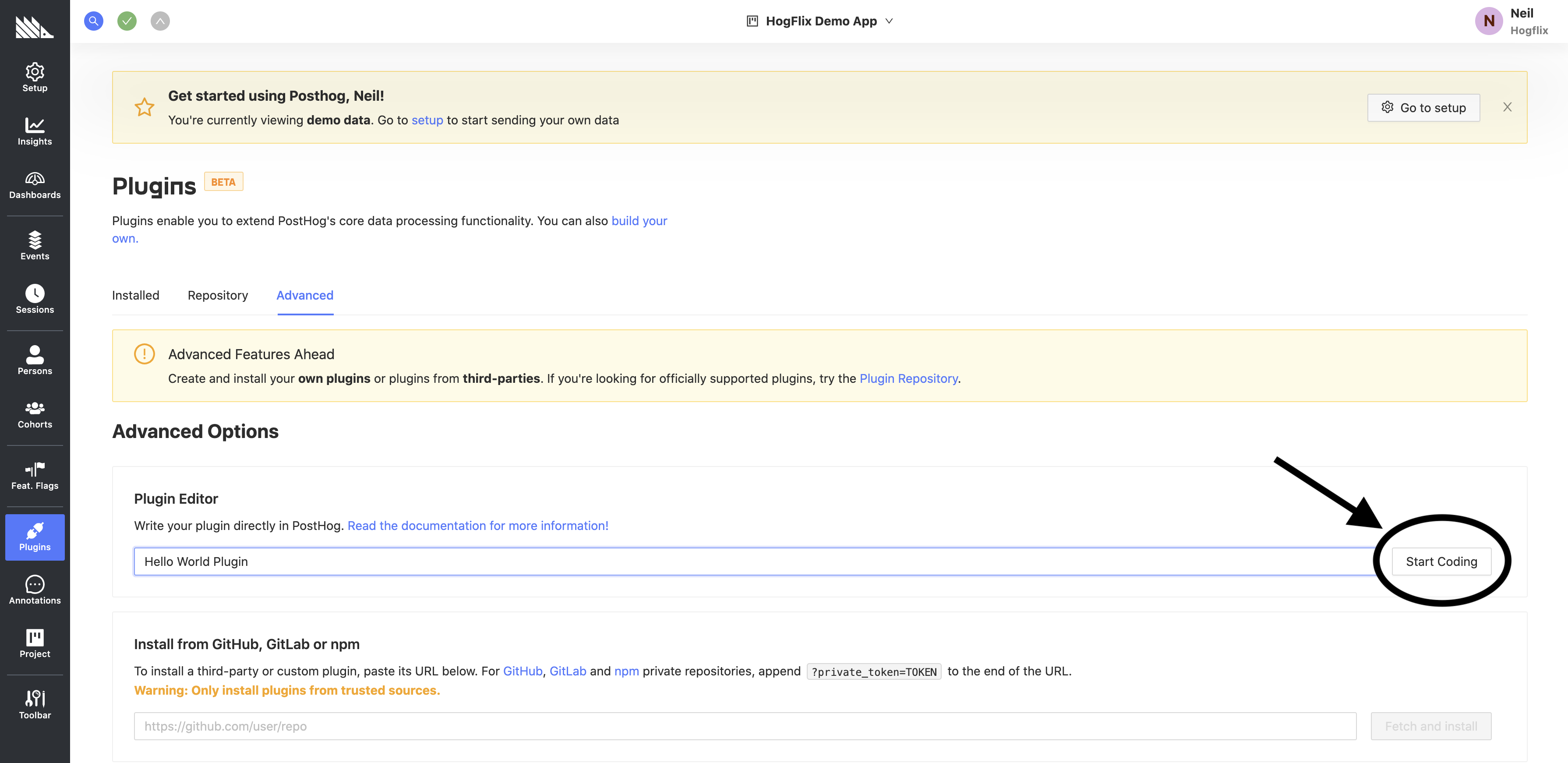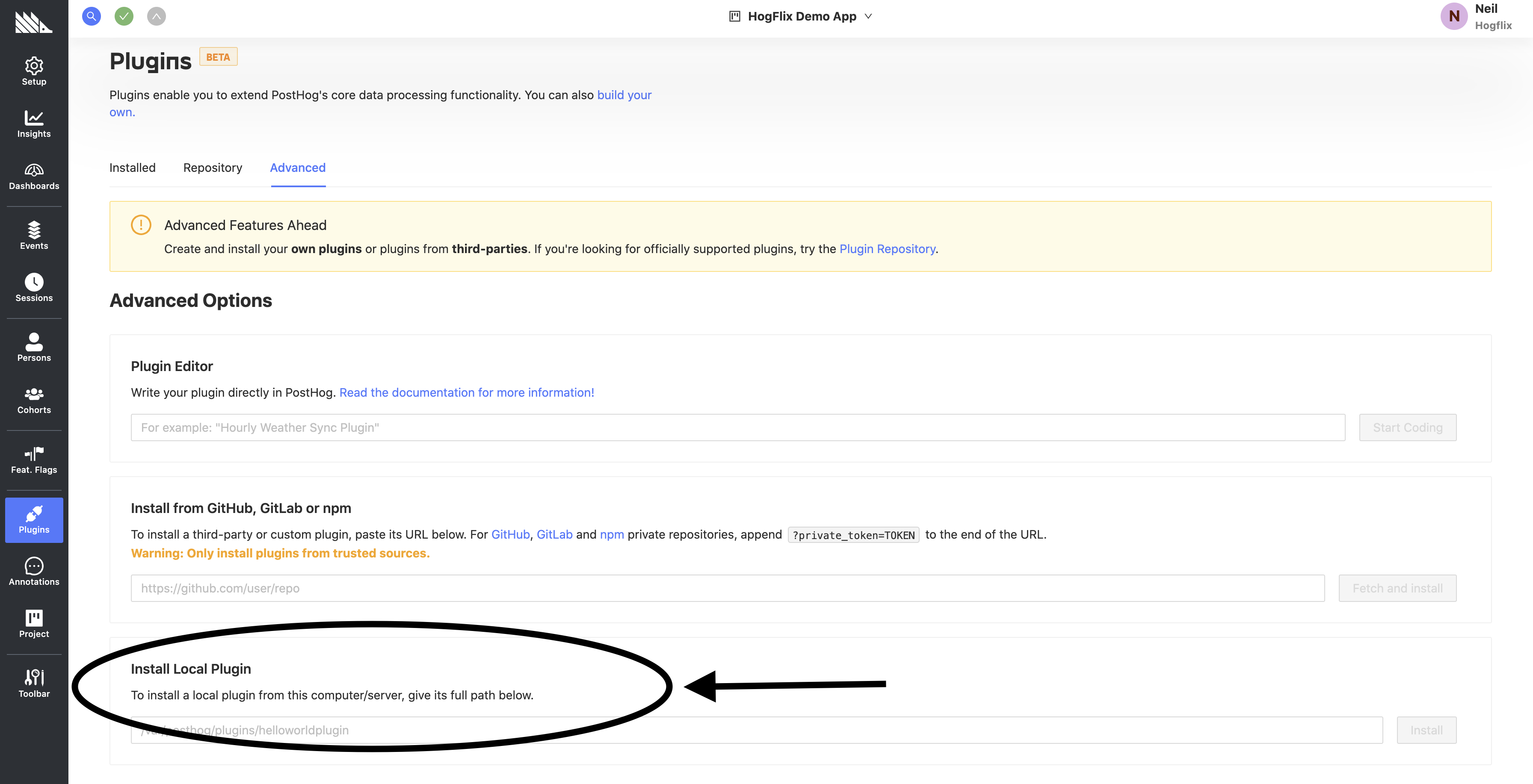This tutorial explains the development workflow and best practices, using an example 'Hello World' app. We go from zero to publishing your app in the official PostHog repository.
Prerequisites
- A self-hosted PostHog instance (or a local development environment)
- Some knowledge of JavaScript (or TypeScript)
The app
Every app begins with either the PostHog app source editor, or a new GitHub repository. In both cases, our app source code will look like this:
And our config would look like:
For information on what code to write and what special functions to use, check out the overview and the developer reference.
Using the app source editor
Go to Apps -> Advanced tab -> App editor -> Start coding.

Then, click on "Edit Source", and you're good to go. Copy your code and config into the editor, and you're ready to test the app.
Using a GitHub repository
We have a GitHub template (GH login required) which helps you create a new repository with all the right files. There are only two files which make up the entire app: the index.js and plugin.json. Your code goes into index.js, and your configuration goes into plugin.json.
Other than this, there's the index.test.js file for tests, and package.json for package dependencies and metadata.
Remember to update package.json with the appropriate metadata, like name, description, and maintainer.
Once you've written the code in this new repository, you can run it by installing it locally in PostHog. See testing for more information.
App naming conventions
When creating your repository, follow the naming convention of posthog-<plugin-name>-plugin. For example, the hello world repository would be called posthog-hello-world-plugin.
Converting a source app to a GitHub repository
If you wish to submit your app to the official repository, you need to convert it into a GitHub repository. The easiest way to do this is to start with the template and copy your source code into index.js and your config into the config field of plugin.json. Then update package.json with the appropriate metadata, like name, description, and maintainer.
See submission instructions for how to submit the app to the PostHog Repository.
Testing
For now, the best way to test apps is to install them locally.
- If you're writing a app in the App source editor, this is as easy as clicking "Save".
- If you're writing a app in a GitHub repository, install it locally using the "Install Local App" option in the Advanced Tab.

This allows you to tweak your app and see that everything works fine.
Debugging
Apps can make use of the JavaScript console for logging and debugging.
These logs can be seen on the 'Logs' page of each app, which can be accessed on the 'Apps' page of the PostHog UI.
Publishing your app
There are four ways to use apps you build:
Publish the app to
npmand install it with the url fromnpmjs.comYou can add it via its repository URL (e.g. GitHub/GitLab)
Reference the location of the app on your local instance (e.g. /Users/yourname/path/to/app)
This can be configured in 'Settings' -> 'Project Apps'.
Submit it to the official repository. See below
Submitting your app
If you wish to, you can contribute back to the PostHog community by submitting to the official App Store. This means everyone else can use your app, too!
If you built a app inside the PostHog editor, first convert it to a GitHub repository
To submit, email your GitHub URL to hey@posthog.com
Once we get your email, we review the app to ensure it's secure, performant, and adheres to best practices. Then, we add it to our official repository and make it available for everyone to use.